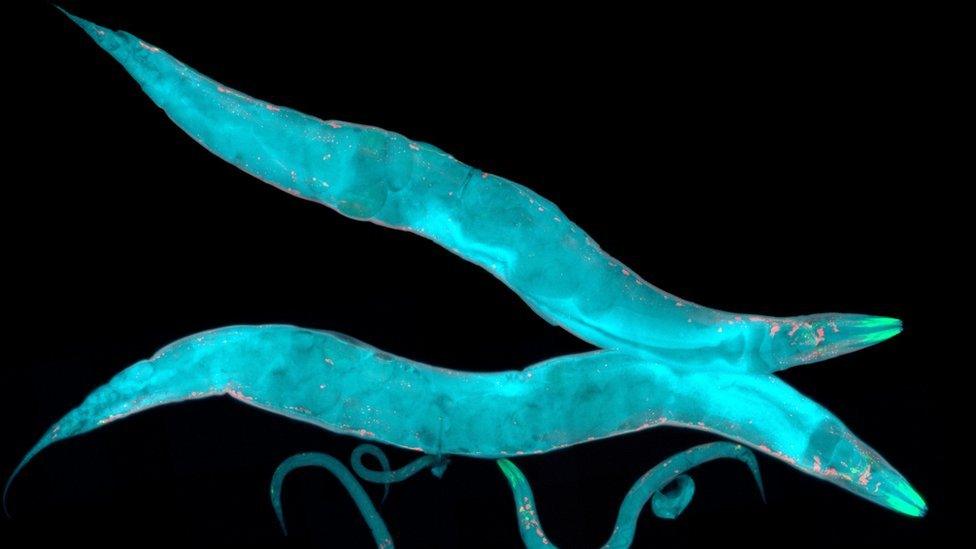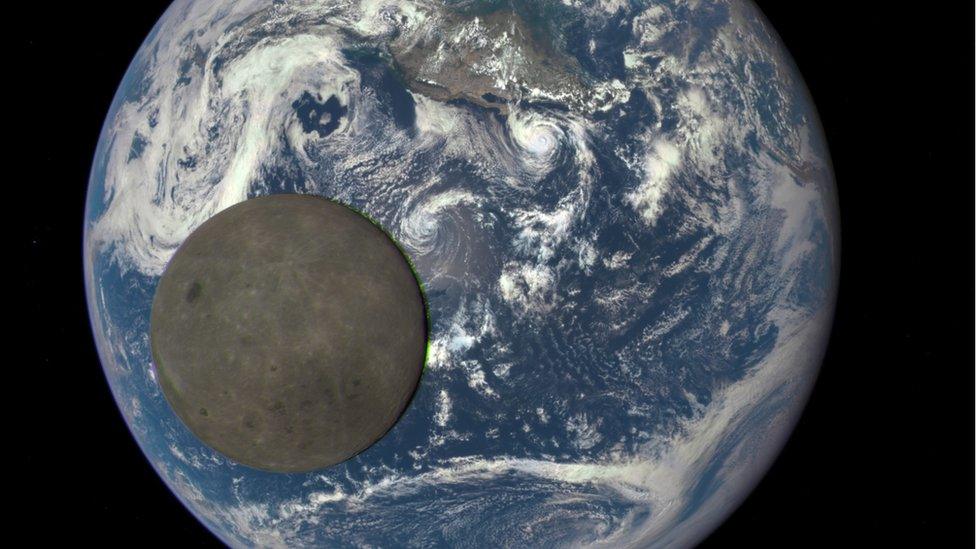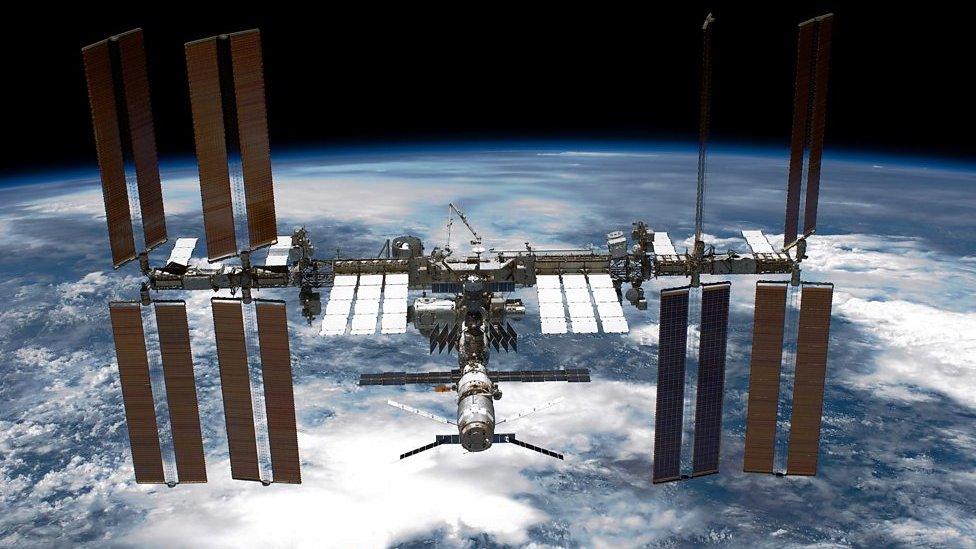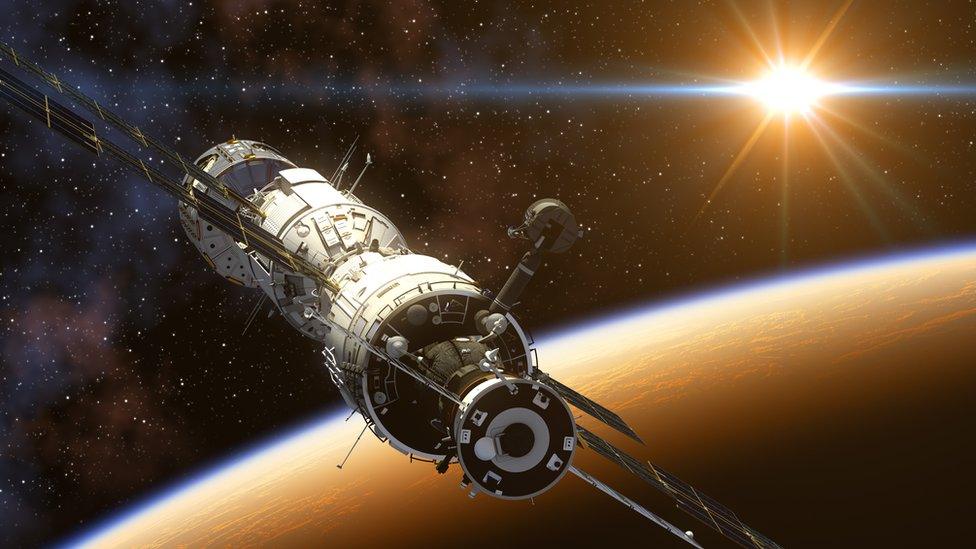Could worms hold the secrets to how our bodies age?
- Published
- comments
WATCH: Worm muscles to help astronauts in space (Sept 2018)
Picture this - worms on the International Space Station. Yep, 36,000 tiny worms are being sent on a mission into space... and it's for a serious experiment.
The SpaceX Falcon 9 rocket was due to launch from the Nasa Kennedy Space Centre in Cape Canaveral, Florida, on Tuesday evening, but has now been rescheduled for 6.16pm (British time) on Wednesday.
The worms, known as C. elegans, are so small they can only be seen under a microscope but they're surprisingly similar to humans.
Scientists are hoping they'll help them understand some of the changes to an astronaut's body when they're in space and unearth the secrets to how our bodies age on earth.
WATCH: What is the International Space Station?
Scientists from Exeter, Nottingham and Lancaster universities are hoping to study how astronauts' muscles react in the conditions at the International Space Station.
Astronauts bodies get old really quickly in space because it speeds up the ageing process. Researchers are hoping the results of the study will help them find out how astronauts' muscles work in this environment.
This could mean astronauts being able to go on longer space missions.
An opportunity to understand human ageing on earth.
Why worms?

These tiny worms and their incredible muscle power might help astronauts stay in space for longer
The transparent worm, or nematode, is about 1mm long.
The worms share many biological characteristics with humans.
Scientists believe that studying how the worms react to life in space could lead to new treatments for diseases that weaken muscles and the skeleton, and help them understand the ageing process on earth.
Sounds like a small wriggle for worms, but it could be a giant leap for mankind!
- Published8 December 2018

- Published20 November 2018

- Published20 November 2018

